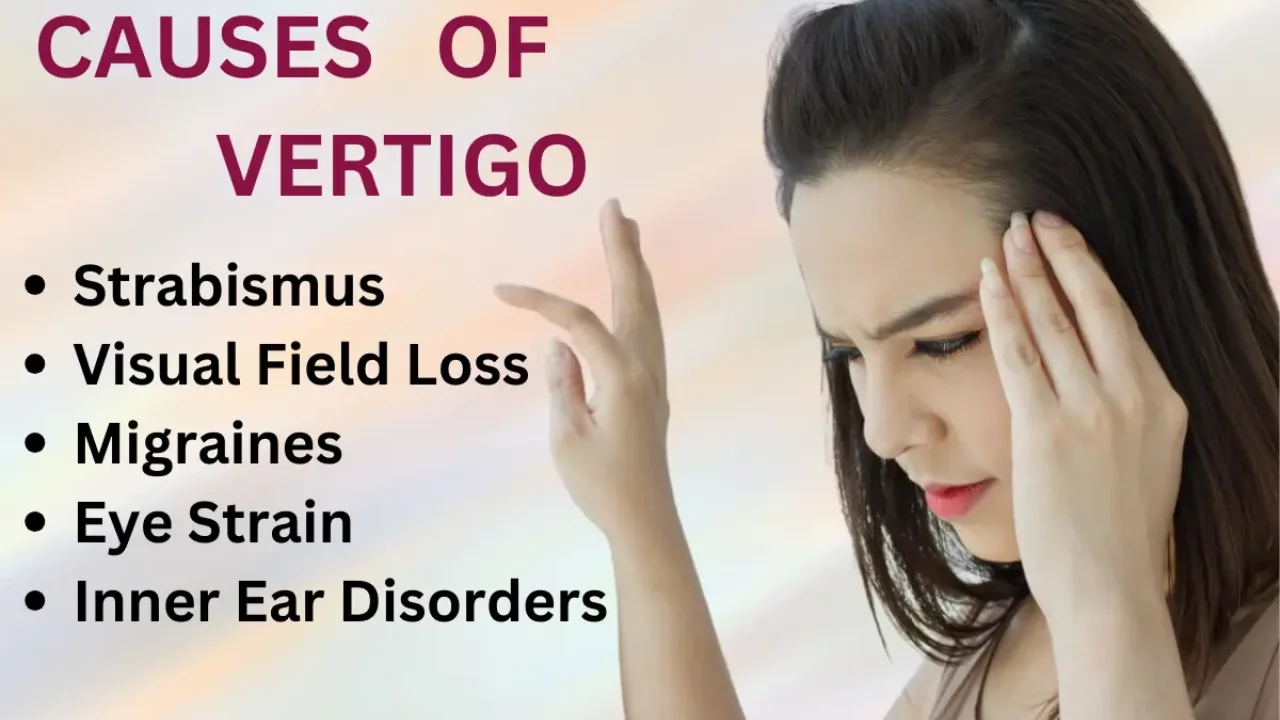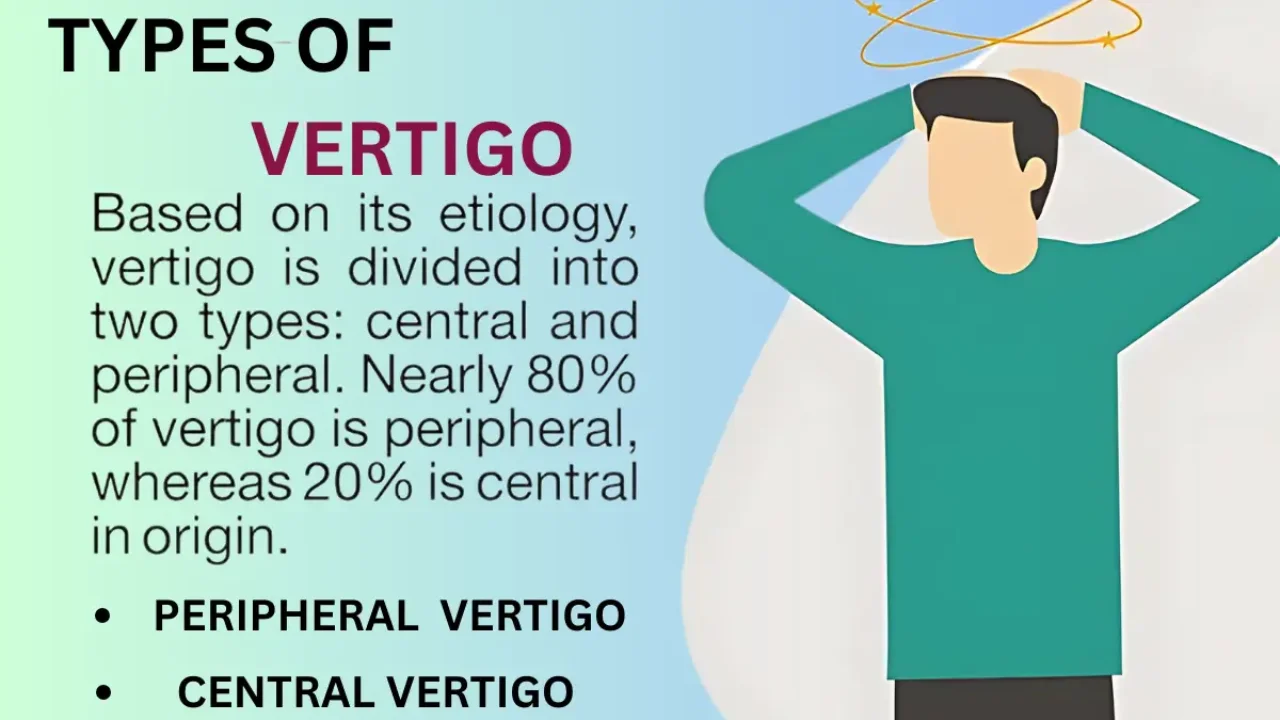Yes, eye problems can cause vertigo. Conditions such as vestibular disorders, strabismus (crossed eyes), or issues with visual acuity can lead to conflicting signals between the eyes and the inner ear, which is responsible for balance. This sensory mismatch can result in dizziness or a sensation of spinning. Additionally, some eye conditions can affect overall balance and spatial orientation, contributing to vertigo. If you experience vertigo along with visual disturbances, it’s important to consult a healthcare professional for a thorough evaluation.
What is visual vertigo?
Like other types of vertigo, visual vertigo is the feeling that you’re spinning even when you’re still. It’s called visual vertigo because it’s triggered by something you see (visual stimuli). In addition to the sense that everything is spinning, you may feel dizzy or off-balance, or have other uncomfortable sensations.
Visual or ocular vertigo is caused by a problem in the deepest part of your ear, called your inner ear. It can also happen when something changes the way your eyes and brain communicate with your inner ear.
Some people call it supermarket syndrome because the symptoms of visual vertigo can be triggered by a place with many complicated patterns and colors. It’s also known as visually induced dizziness or VID.

Symptoms Of Vertigo
Yes, eye problems can cause vertigo symptoms:
Eyestrain
Staring at screens for long periods can cause eye muscles to tense up, leading to dizziness and headaches.
Incorrect eyeglasses
If your glasses aren’t right for your vision, you might feel off balance or dizzy.
Bifocal lenses
Adjusting to the different strengths of bifocal lenses while moving your eyes around can cause vertigo.
Binocular Vision Dysfunction (BVD)
This condition occurs when the eyes don’t work together to create a clear image. BVD can cause visual vertigo, which can include dizziness, nausea, headaches, and vomiting.
Nystagmus
This condition involves the eyes making involuntary, repetitive movements, which can cause vertigo or disorientation.
Traumatic brain injury
A brain injury can cause vision problems that may lead to vertigo.

Causes Of Vertigo
Vertigo related to eye problems can arise from several causes, including:
Vestibular-Ocular Reflex Dysfunction:
Issues with the reflex that helps stabilize vision during head movements can lead to vertigo.
Visual Motion Sensitivity:
Some individuals are sensitive to moving visual patterns, which can trigger dizziness or vertigo.
Strabismus:
Misalignment of the eyes can create conflicting signals about position and movement, resulting in vertigo.
Visual Field Loss:
Loss of vision in one eye can disrupt balance and spatial awareness, causing dizziness.
Migraines:
Visual disturbances associated with migraines can also trigger vertigo.
Eye Strain:
Prolonged screen time or focusing on close objects can lead to fatigue and dizziness.
Inner Ear Disorders:
Conditions like vestibular neuritis can be exacerbated by visual stimuli, leading to vertigo.

Types of vertigo
There are two main types of vertigo: peripheral and central.
Peripheral vertigo is the most common type. It happens when there’s an issue with your inner ear or vestibular nerve. (Both help with your sense of balance.)
Subtypes of peripheral vertigo include:
Benign paroxysmal positional vertigo (BPPV).
Labyrinthitis.
Vestibular neuritis.
Ménière’s disease.
Central vertigo is less common. It occurs when you have a condition affecting your brain, like an infection, stroke or traumatic brain injury. People with central vertigo usually have more severe symptoms like severe instability or difficulty walking.
How is Visual Vertigo Treated?
Visual vertigo can be treated with a variety of approaches, including:
Vestibular rehabilitation therapy (VRT)
A doctor may refer you to a physical therapist or audiologist who specializes in VRT. VRT can help improve balance, reduce dizziness, and reduce the risk of falling.
VRT may include exercises that focus on eye and head movements, balance, gait, and substitution techniques.
Medication
A doctor may recommend medication such as vestibular suppressants, antiviral medication, antiemetic medications, or acetazolamide.
Lifestyle changes
A doctor may recommend lifestyle changes to help alleviate or eliminate vertigo.
Cognitive behavioral therapy
This therapy can help patients mentally and emotionally deal with the treatment process.
Eye exercises
Eye exercises, paired with head movements, may help improve vertigo.
Visual vertigo is caused by a minor misalignment of the eyes, which can lead to the brain receiving two slightly different images. This can cause the brain to force the eye muscles to realign, which can lead to eye strain, dizziness, headaches, and nausea.


